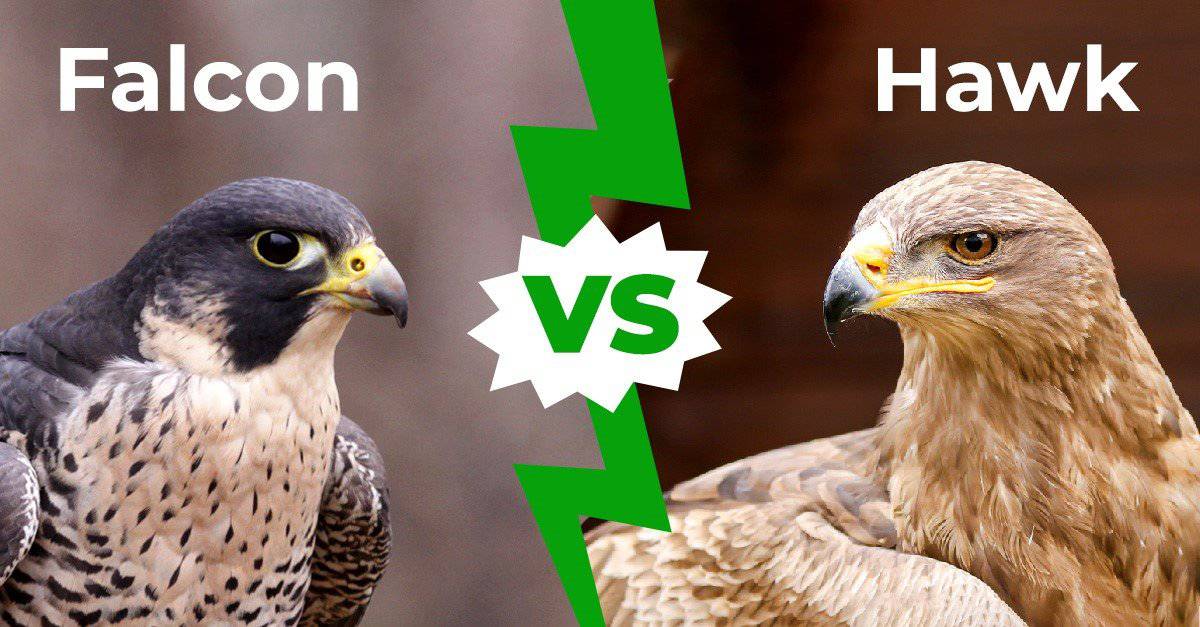Have you ever watched a bird of prey soar through the sky, its powerful wings effortlessly cutting through the air, and wondered what kind of majestic creature it was? The world of raptors is filled with impressive flyers, but three names often come up in discussions about aerial dominance: hawks, falcons, and eagles. While they may seem similar at first glance, these magnificent birds possess distinct characteristics, hunting strategies, and ecological roles that make them unique and captivating.

Image: a-z-animals.com
This article dives into the fascinating world of hawks, falcons, and eagles, exploring their evolutionary history, physical attributes, hunting techniques, and the crucial part they play in maintaining a healthy ecosystem. Join us as we unravel the secrets of these aerial predators, discovering how they have evolved to conquer the skies and become apex hunters in their respective environments.
Evolutionary Roots: A Shared Ancestry
A Tale of Two Orders:
To understand the differences between hawks, falcons, and eagles, it’s essential to appreciate their shared ancestry. They all belong to the order Falconiformes, a group of birds renowned for their predatory abilities. However, within this order lies a suborder called Falcones, which specifically includes falcons. Hawks, on the other hand, fall under the suborder Accipitriformes, along with eagles and other birds of prey.
Despite belonging to different suborders, hawks, falcons, and eagles share a common ancestor that dates back millions of years. This shared lineage explains why they exhibit some similarities in their physical traits and hunting strategies. However, over time, natural selection has driven the evolution of distinct adaptations in each group, leading to the unique characteristics that distinguish them today.
Physical Distinctions: A Closer Look

Image: animalhype.com
Hawks:
Hawks are known for their broad, rounded wings that enable them to maneuver with agility through dense forests and woodlands. They have a powerful build, with short, stout legs and hooked beaks. Their eyesight is exceptional, allowing them to spot prey from great distances. Some notable species include Cooper’s Hawk, Red-tailed Hawk, and the Sharp-shinned Hawk.
Falcons:
Falcons are distinguished by their pointed, streamlined wings, which are specifically designed for high-speed flight and aerial pursuits. They have long, powerful legs and sharp, hooked beaks. Falcons are known for their astonishing speed, capable of reaching speeds over 200 mph during dives. Common falcon species include Peregrine Falcons, Gyrfalcons, and American Kestrels.
Eagles:
Eagles are the largest and most powerful birds of prey, often boasting wingspans exceeding 7 feet. Their broad, powerful wings are designed for soaring long distances and powerful dives. Their hooked beaks are formidable weapons capable of tearing through flesh. Species like the Bald Eagle and Golden Eagle are iconic examples of these magnificent predators.
Hunting Strategies: Masters of the Air
Hawks:
Hawks are opportunistic hunters that employ a variety of strategies. They often perch high in trees, scanning the ground for small mammals, birds, and reptiles. When they spot prey, they swoop down with lightning speed, using sharp talons to capture their victim. Some hawk species are known for their aerial acrobatics, weaving through tree branches to ambush their targets.
Falcons:
Falcons rely on their incredible speed and agility to catch prey. They typically hunt in open areas, like grasslands and deserts. Their hunting strategy involves soaring high above the ground, then diving at breakneck speeds towards their target. The falcon’s hooked beak and razor-sharp talons are used to quickly subdue their prey.
Eagles:
Eagles are apex predators with a diverse hunting repertoire. They can hunt from the air, swooping down to capture fish, snakes, and other birds. They can also snatch prey from the ground or even raid nests and steal young animals. The Bald Eagle, for instance, is known to scavenge carrion and steal fish from other birds.
Ecological Roles: Vital Components of the Ecosystem
Hawks, Falcons, and Eagles: Nature’s Regulators
Hawks, falcons, and eagles play a crucial role in maintaining the balance of ecosystems. As predators, they regulate the populations of their prey species, preventing any one species from becoming overly abundant and disrupting the delicate equilibrium of the food web. Their presence helps to control rodent populations, reducing crop damage and disease outbreaks. By eliminating weak or sick individuals from prey populations, they also help to promote healthy and robust populations of their prey.
Threats and Conservation: Safeguarding the Future of Raptors
Despite their remarkable adaptations and ecological importance, hawks, falcons, and eagles face numerous threats that jeopardize their survival. Habitat loss, pollution, and illegal hunting are among the major challenges they encounter. Climate change is also impacting these birds, altering their prey availability and breeding patterns.
Conservation efforts are crucial for ensuring the future of these magnificent birds. Protecting their habitats, reducing pollution, and enforcing anti-hunting laws are vital steps towards their continued existence. Organizations like the Peregrine Fund and the World Wildlife Fund are dedicated to studying and protecting these birds, raising awareness about their importance and advocating for their conservation.
Hawk Vs Falcon Vs Eagle
Conclusion: Appreciating the Majesty of Raptors
The world of hawks, falcons, and eagles is a captivating one, filled with awe-inspiring creatures that have adapted to thrive in diverse environments. Their physical prowess, hunting techniques, and ecological roles demonstrate the incredible power of natural selection. By understanding and appreciating these birds, we can contribute to their conservation and ensure that their majestic presence graces our skies for generations to come.
We encourage you to delve deeper into the amazing world of raptors. Explore online resources, visit local wildlife sanctuaries, or even observe them in their natural habitats. With responsible stewardship, we can safeguard these incredible birds for the future.






